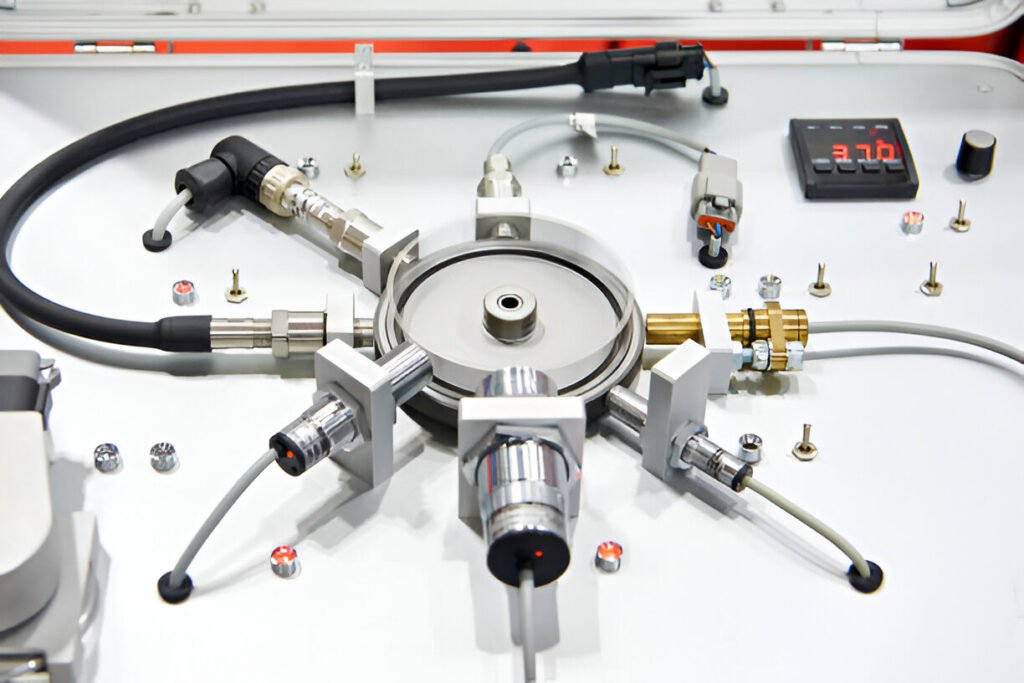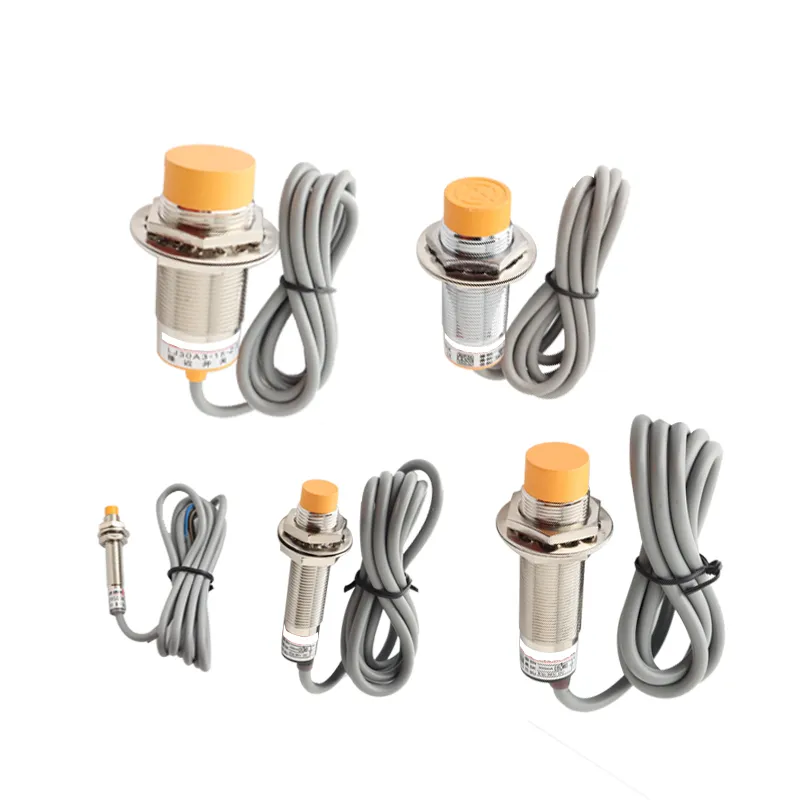인코더와 전위차계: 선택 방법
자동화, 로봇 공학 또는 산업 제어 분야에서 위치나 움직임을 측정해야 할 때 보통 엔코더와 포텐셔미터라는 두 가지 이름을 떠올리게 됩니다. 둘 다 위치 피드백을 제공한다는 비슷한 목적을 가지고 있지만, 작동 원리, 장점, 이상적인 사용 사례는 매우 다릅니다. 이 두 가지 인기 있는 센서의 차이점을 자세히 살펴보고 [...]를 만들 수 있도록 도와주세요.


Proximity switch sensor are a critical part of countless automated systems. They detect the presence or absence of objects without physical contact. This ability makes them perfect for harsh industrial environments where wear and tear is a concern.
Two of the most popular types are NPN and PNP proximity sensors. Choosing between these two depends heavily on your system’s requirements.
Why is this choice crucial? Imagine using the wrong sensor: you might get unreliable signals, system faults, or even damage to your control equipment.
This guide will walk you through how to identify NPN vs PNP sensors, understand their working principles, and select the right one based on your application needs—ensuring your automation runs smoothly and efficiently.
If you’re new to proximity sensors or just want a quick refresher, let’s start with the basics. An NPN sensor is a type of proximity switch sensor commonly used in industrial environments. So, what does NPN mean?
NPN stands for Negative-Positive-Negative, which describes the transistor output configuration inside the sensor. Here’s how it works:
Here’s a simple wiring diagram for an NPN 인덕티브 근접 스위치 차폐형 M18 proximity sensor:
| Wire Color | Connection | Role |
|---|---|---|
| 브라운 | Power Supply (+Vcc) | Provide positive voltage (usually +12V to +24V) |
| Blue | Ground (GND) | Sensor ground reference |
| Black | Output (OUT) | Signal output, connects to ground when active |
Think of it as a gate that closes to ground when it senses something nearby. This configuration is also called a sinking output because it pulls the load current down to ground.
NPN sensors are often described as “open collector” or “open drain,” which means the sensor can pull the signal line low but can’t drive it high.
Did you know? If your control system expects signals connected to ground, an NPN sensor is your go-to. Send us an inquiry, and we can help you pick the right sensor for your system!
Let’s flip the coin. What’s PNP, and why does it seem so similar yet so different?
PNP means Positive-Negative-Positive, describing the opposite internal transistor setup. In simple terms:
Let’s see how PNP wiring compares:
| Wire Color | Connection | Role |
|---|---|---|
| 브라운 | Power Supply (+Vcc) | Provide positive voltage (typically +12V to +24V) |
| Blue | Ground (GND) | Sensor ground reference |
| Black | Output (OUT) | Signal output, connects to positive voltage when active |
The sensor acts like a switch that connects the output wire to the positive supply voltage—hence it’s called a sourcing output.
Wondering if a PNP sensor suits your setup? Contact us today for customized recommendations and support.
Understanding the core working principle of these Proximity Switch Sensor will clarify their applications.
| 기능 | NPN Sensor | PNP Sensor |
|---|---|---|
| 출력 유형 | Sinking (output connected to ground when active) | Sourcing (output connected to positive voltage when active) |
| Output Signal Level | Low (0V) on detection | High (+Vcc) on detection |
| Current Flow Direction | From load to ground | From power supply to load |
| Compatible PLC input types | Sinking input modules | Sourcing input modules |
| Typical use regions | Europe, Asia | North America, worldwide |
How This Affects Circuit Design
Pro tip: Check your PLC or controller manual for input specifications before buying sensors.


Discover the perfect proximity switch sensor for your needs. Get expert advice to optimize your industrial automation system now!
Selecting the right Proximity Switch Sensor type depends on several real-world considerations beyond just technical specs:
Table: Summary of Considerations
| 요인 | Prefer NPN Sensor | Prefer PNP Sensor |
|---|---|---|
| PLC input module | Sinking (input goes low when active) | Sourcing (input goes high when active) |
| Regional usage | Europe, Asia | North America |
| Safety preference | Less common | Fail-safe advantage |
| Wiring simplicity | Load connected to positive supply | Load connected to ground |
Need help with integrating these sensors into your system? Reach out for expert advice and tailored proximity switch sensor solutions.
Your choice of NPN or PNP proximity switch sensors often depends on the specific application. Here are some typical use cases:
| 애플리케이션 | 권장 센서 유형 | Important Notes |
|---|---|---|
| Production lines | NPN or PNP based on PLC | Match control system inputs |
| 로봇 공학 | Often PNP | Ensures compatibility with control electronics |
| 자동차 | Varies by region | Follow local standards |
| Logistics | System dependent | Prioritize signal speed & accuracy |
| Smart home | PNP preferred | Positive voltage outputs simplify wiring |
Choosing between NPN and PNP 근접 스위치 센서 doesn’t have to be complicated. It boils down to matching the sensor output type with your control system and application requirements.
Remember:
By understanding these factors, you’ll ensure reliable, safe, and efficient operation of your automated systems.
Are you ready to optimize your automation setup with the perfect 근접 센서? Contact us now for expert advice and customized sensor solutions designed exactly for your needs!
NPN sensors connect output to ground (0V) on detection, whereas PNP sensors connect output to positive voltage (+Vcc). Check the wiring color code and datasheet to be sure.
No. The PLC input must accept sinking signals for NPN sensors or sourcing signals for PNP sensors. Consult your PLC manual.
Only if the control system supports both input types or wiring is modified accordingly.
Check datasheets or test output signals with and without a target present. NO opens circuit when idle; NC closes circuit when idle.
Check wiring, grounding, power supply voltage, and confirm sensor compatibility with the controller. Faulty shielding or wiring errors are common causes.
Most sensors operate at 10-30V DC with output currents around 100-200mA, but always confirm with manufacturer specs.